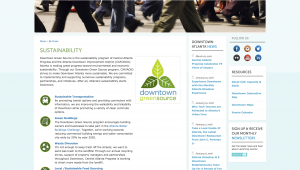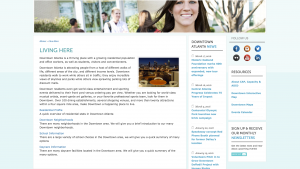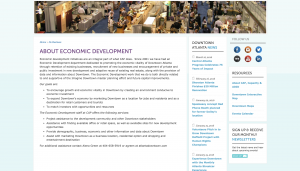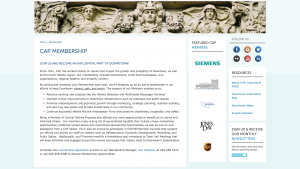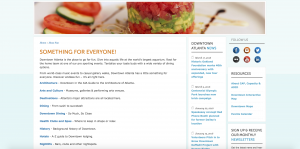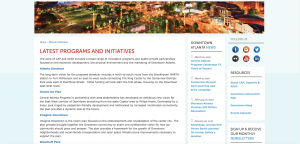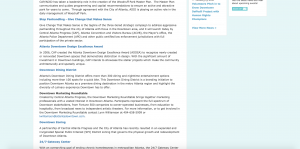Today, Atlanta is one of the most fastest growing urban cities in the country. New buildings and roads are being built and remodeled everyday, but what majority people don’t realize is that there is an unbalanced growth in the city of Atlanta. When one drives through the current day city of Atlanta, one area of the city in the north will have lavish new apartments and beautifully groomed green spaces, but as you make your way down into the south one could see a poverty stricken neighborhood with wore down streets and disparaging homes. The gap between the rich and poor is clearly seen within the built environment in Atlanta. The uneven distribution of wealth in north and southern Atlanta could leads to a profuse amount of issues in the community; the regions concentrated poverty is growing disproportionately and has strong racial dimensions which leads to issues with undermined neighborhoods, economic opportunities, and urban sprawl.
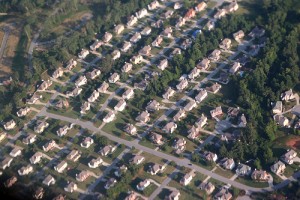 Being a local resident of a city there’s a clear separation of classes within the city. The poor are usually concentrated in central parts of the city while the middle-income and high-income population are living in the suburbs. But this norm for separation of class has change in Metro Atlanta in the last decade, where suburbs around the city are experiencing the faster rate of poverty growth. Between 2000 and 2010, poverty increased 5.9 percent in the suburbs compared to 1.7 percent in the city. In Metropolitan Atlanta’s suburbs the most concentrated region of poverty would be in the south; counties such as DeKalb, Douglas, Clayton, and south Fulton. Neighborhoods in these areas consist of aged impoverished houses lined up along unattended depleting cement streets with broken-down cars parked on their side walks. Notice early when I said south Fulton, instead of Fulton county as a whole, it is because Fulton county is a prime example for the separation of rich and poor. Residents in northern Fulton are middle to high income families living in new subdivision of three and four-bedroom two-story homes with high-ceilinged great rooms and luxurious master baths that sell in the $300,000s range, compared to our southern Fulton county counterparts. One reason that low-income families live in the southern part of the metropolitan area is that there is almost no affordable housing elsewhere. That is partly because subsidized housing tends to be located in distressed inner-city and older-suburban neighborhoods and partly because wealthier suburbs practice exclusionary zoning and limit affordable housing within their borders. Therefore, the issue with the poor is that they are forced to live in these crippling houses and run-down neighborhoods because their economic state won’t allow them to afford a better environment. A series of studies from the Wharton School at the University of Pennsylvania has shown that, “despite receiving federal anti-poverty aid, cities with high levels of poverty have to spend more of their own revenues on direct poverty expenditures (ex. welfare, public health, and hospitals) than do jurisdictions with low poverty.” Meaning that the residents and businesses in that region are paying for poverty’s cost as the expense of better service and infrastructure; which they are not getting at the same time. Living in a very poor neighborhood exacerbates the difficulties of being poor.
Being a local resident of a city there’s a clear separation of classes within the city. The poor are usually concentrated in central parts of the city while the middle-income and high-income population are living in the suburbs. But this norm for separation of class has change in Metro Atlanta in the last decade, where suburbs around the city are experiencing the faster rate of poverty growth. Between 2000 and 2010, poverty increased 5.9 percent in the suburbs compared to 1.7 percent in the city. In Metropolitan Atlanta’s suburbs the most concentrated region of poverty would be in the south; counties such as DeKalb, Douglas, Clayton, and south Fulton. Neighborhoods in these areas consist of aged impoverished houses lined up along unattended depleting cement streets with broken-down cars parked on their side walks. Notice early when I said south Fulton, instead of Fulton county as a whole, it is because Fulton county is a prime example for the separation of rich and poor. Residents in northern Fulton are middle to high income families living in new subdivision of three and four-bedroom two-story homes with high-ceilinged great rooms and luxurious master baths that sell in the $300,000s range, compared to our southern Fulton county counterparts. One reason that low-income families live in the southern part of the metropolitan area is that there is almost no affordable housing elsewhere. That is partly because subsidized housing tends to be located in distressed inner-city and older-suburban neighborhoods and partly because wealthier suburbs practice exclusionary zoning and limit affordable housing within their borders. Therefore, the issue with the poor is that they are forced to live in these crippling houses and run-down neighborhoods because their economic state won’t allow them to afford a better environment. A series of studies from the Wharton School at the University of Pennsylvania has shown that, “despite receiving federal anti-poverty aid, cities with high levels of poverty have to spend more of their own revenues on direct poverty expenditures (ex. welfare, public health, and hospitals) than do jurisdictions with low poverty.” Meaning that the residents and businesses in that region are paying for poverty’s cost as the expense of better service and infrastructure; which they are not getting at the same time. Living in a very poor neighborhood exacerbates the difficulties of being poor.
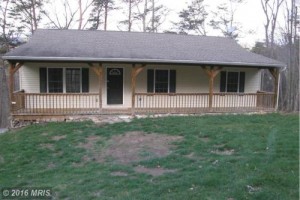
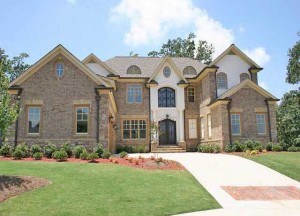 Both houses are located in Fulton County
Both houses are located in Fulton County
 For Residents living in poor southern neighborhoods in Metropolitan Atlanta, they are often tied to having insufficient economic opportunities too. Poverty affects the geography of opportunity for those people living in the suburbs. Neighborhoods of extreme poverty are isolated from economic and educational opportunities elsewhere in the city or region. Poor residents often lack the means to information about suburban jobs andreliable and affordable transportation to those jobs. Nearly 350,000 new jobs have been added to the Atlanta region since 1990, but almost three-fourths of this job growth has occurred in the northern part of Metro Atlanta. Welfare recipients and the working poor are the ones who are most likely to fill entry-level jobs, such as administration, sales, transportation and service sector jobs; but these jobs are moving outward away form the core of the Atlanta region, where it is needed most. Another factor that is the cause of this unbalanced growth of economic opportunity roots from the lack of transportation in Metro Atlanta. Since Atlanta was built on a highway system, not only is the city’s traffic notorious of being the worst in the country, the working poor who do have jobs but no car have trouble getting to and from work due to the lack of public transportation. This also leads to issues with social mobility, meaning the youth that are born into poverty are at a disadvantage when making it into wealthier level of society. Elizabeth Kneebone of the Brooking’s Institution states that, “the fact that more poor people live in the suburbs doesn’t have to be a bad thing. If low-income residents have access to good job opportunities, affordable housing, low crime rates, and good schools, then the suburbs can provide a path out of poverty”. But the poverty has increased so expeditiously in some suburbs, many of these communities require the infrastructure, safety-net supports, and resources that can allow residents to get out of their poverty stricken lives.
For Residents living in poor southern neighborhoods in Metropolitan Atlanta, they are often tied to having insufficient economic opportunities too. Poverty affects the geography of opportunity for those people living in the suburbs. Neighborhoods of extreme poverty are isolated from economic and educational opportunities elsewhere in the city or region. Poor residents often lack the means to information about suburban jobs andreliable and affordable transportation to those jobs. Nearly 350,000 new jobs have been added to the Atlanta region since 1990, but almost three-fourths of this job growth has occurred in the northern part of Metro Atlanta. Welfare recipients and the working poor are the ones who are most likely to fill entry-level jobs, such as administration, sales, transportation and service sector jobs; but these jobs are moving outward away form the core of the Atlanta region, where it is needed most. Another factor that is the cause of this unbalanced growth of economic opportunity roots from the lack of transportation in Metro Atlanta. Since Atlanta was built on a highway system, not only is the city’s traffic notorious of being the worst in the country, the working poor who do have jobs but no car have trouble getting to and from work due to the lack of public transportation. This also leads to issues with social mobility, meaning the youth that are born into poverty are at a disadvantage when making it into wealthier level of society. Elizabeth Kneebone of the Brooking’s Institution states that, “the fact that more poor people live in the suburbs doesn’t have to be a bad thing. If low-income residents have access to good job opportunities, affordable housing, low crime rates, and good schools, then the suburbs can provide a path out of poverty”. But the poverty has increased so expeditiously in some suburbs, many of these communities require the infrastructure, safety-net supports, and resources that can allow residents to get out of their poverty stricken lives.
The issues stated above with the lack of housing and economic opportunity for the poor all relate to the disproportionate issue with race. North of Interstate 20, in Gwinnett, Cobb, and Cherokee counties; White make up 80 percent of the region. Where in the south, Fulton and DeKalb are home to 74 percent of the regions non-white population. There is clear distinction of segregation when looking at these numbers. Many studies have documented that the segregation of African-Americans across the country, not just in Atlanta, has remained high. In American Apartheid, authors Douglas Massey and Nancy Denton found that segregation levels were almost as high for affluent and middle-class blacks as for poor blacks, and that blacks were more segregated than other racial groups, even if those other groups were mostly poor. Racial segregation along with concentration of poverty and growing economic inequality, results in growing isolation of poor minority households. Even though racial discrimination is declining in the present day; for blacks, it does not appear that this has translated into them being able to move into better neighborhoods. In 2000, the medium income for blacks were $35,306 and for whites $51,459. While blacks earn about 60 percent of what whites earn, their net wealth is approximately one-tenth that of whites. These racial disparities reflect where blacks and whites are located in Metro Atlanta, along with the spatial and racial inequalities that are directly associated with access to virtually all products and services associated with a good life; such as health, education, and employment. Due to racial segregation within the environment blacks along with other minorities are prevented from improving their lives because they are faced with issues that middle and upper class whites don’t usually face. In Gregory D. Squire’s Privileged Places, he states that “in many cities, racial differences in poverty levels, employment opportunities, wages, education, housing and health care, among other things, are so strong that the worst urban conditions in which whites reside are considerably better than the average conditions of black communities. All these issues o riginate from the local government decisions and their policies. Those decisions often have, by design, exclusionary implications that limit opportunities, particularly for low-income households and people of color. Due to these decisions to isolate unwanted races from certain regions; some racial minorities who could afford to live in better housing face conflict and hassle outside their communities forcibly leading them to choose a segregated neighborhood for their home. It is these forms of racial segregation that continues to fuel patterns disparity relating to economic and racial sprawl.
riginate from the local government decisions and their policies. Those decisions often have, by design, exclusionary implications that limit opportunities, particularly for low-income households and people of color. Due to these decisions to isolate unwanted races from certain regions; some racial minorities who could afford to live in better housing face conflict and hassle outside their communities forcibly leading them to choose a segregated neighborhood for their home. It is these forms of racial segregation that continues to fuel patterns disparity relating to economic and racial sprawl.
Evidence shows that there is a strong financial wall that separates the fortunate from the less fortunate in Metropolitan Atlanta, where there is growing gap between northern and southern residents in the suburbs surrounding the city of Atlanta. This major issue is rooted in the inequality of housing, economic opportunities, and race within the south. There is a never ending cycle of poverty due to the isolation of the poor from economic and educational opportunities that they need in order to improve their lives and escape suffering. In the last decade, Metro Atlanta’s suburbs poverty has nearly doubled leading to the disproportionate growth of population, further widening the gap between the rich and poor, a majority of who which are minorities. This economic disparity has gone ignored by local government, advancing polices that limit and segregate low-income households and people of color. There needs to be a demand for change. Residents in Atlanta must wake up and realize this a crucial concern dealing with the people that make up this beautiful and amazing city. Atlanta is slowly becoming one of the most diverse city in America, issues with inequality of poverty and race should no longer be an issue, if the residents of city see how ugly certain places of their hometown are; there is a hope that people will come together and reform a change to the economic/racial separation that is prominent in Metropolitan Atlanta.
Work Cited:
Pugh, Margaret. Moving Beyond Sprawl : The Challenge For Metropolitan Atlanta. n.p.: Washington, DC : Brookings Institution Center on Urban & Metropolitan Policy, c2000., 2000. GEORGIA STATE UNIV’s Catalog. Web. 29 Apr. 2016.
Feliciano, Ivette. “Here’s What Concentrated Poverty Looks like in South Atlanta.” N.p., 9 May 2015. Web. 29 Apr. 2016.
Peterson, Mark. “Sprawled Out in Atlanta.” POLITICO Magazine. N.p., 8 May 2014. Web. 29 Apr. 2016.
Semuels, Alana. “Suburbs and the New American Poverty.” The Atlantic 7 Jan. 2015. The Atlantic. Web. 29 Apr. 2016.
Squires, Gregory, and Charis Kubrin. “Privileged Places.” N.p., 2006. Web. 25 Mar. 2016.



